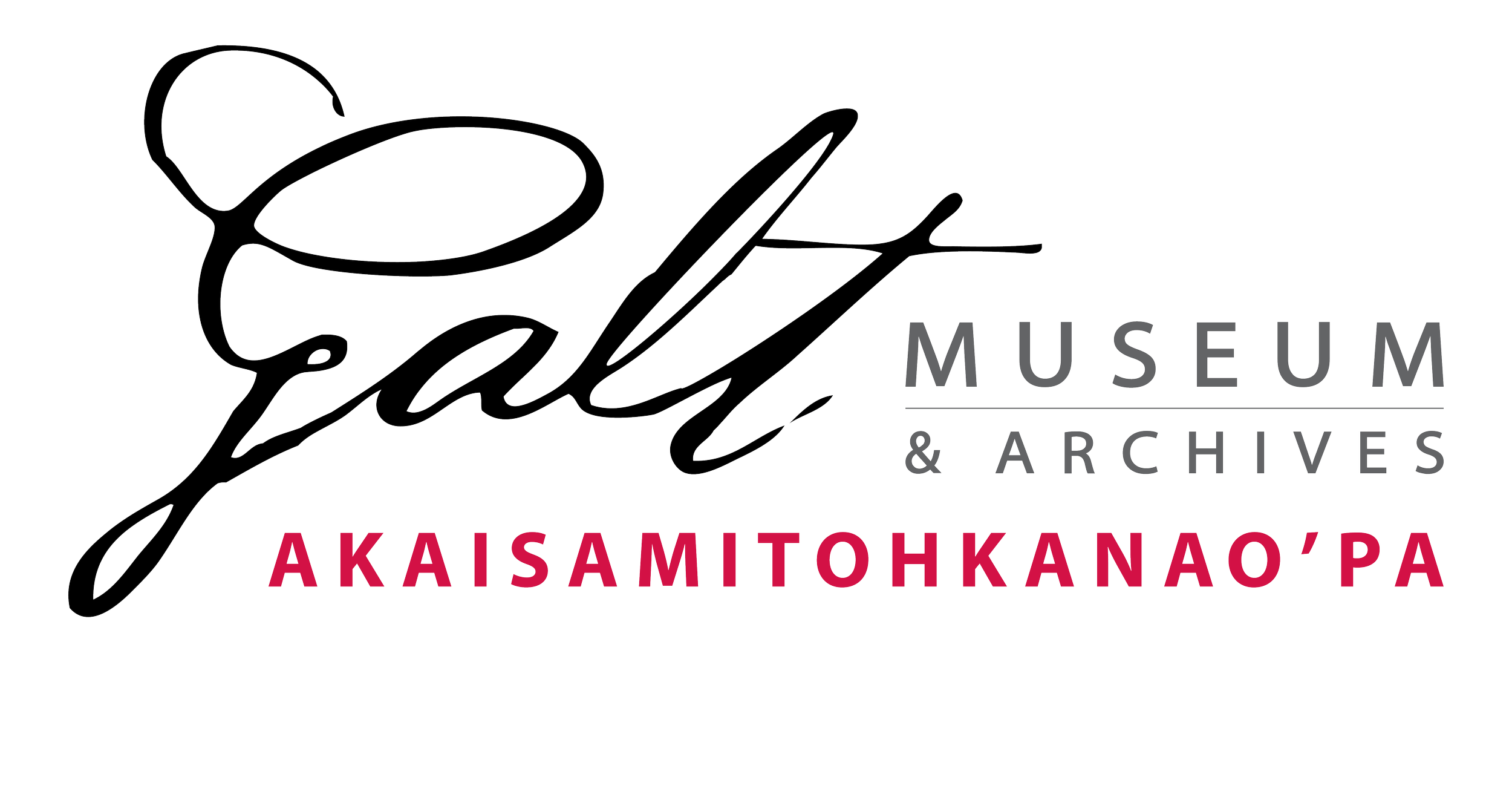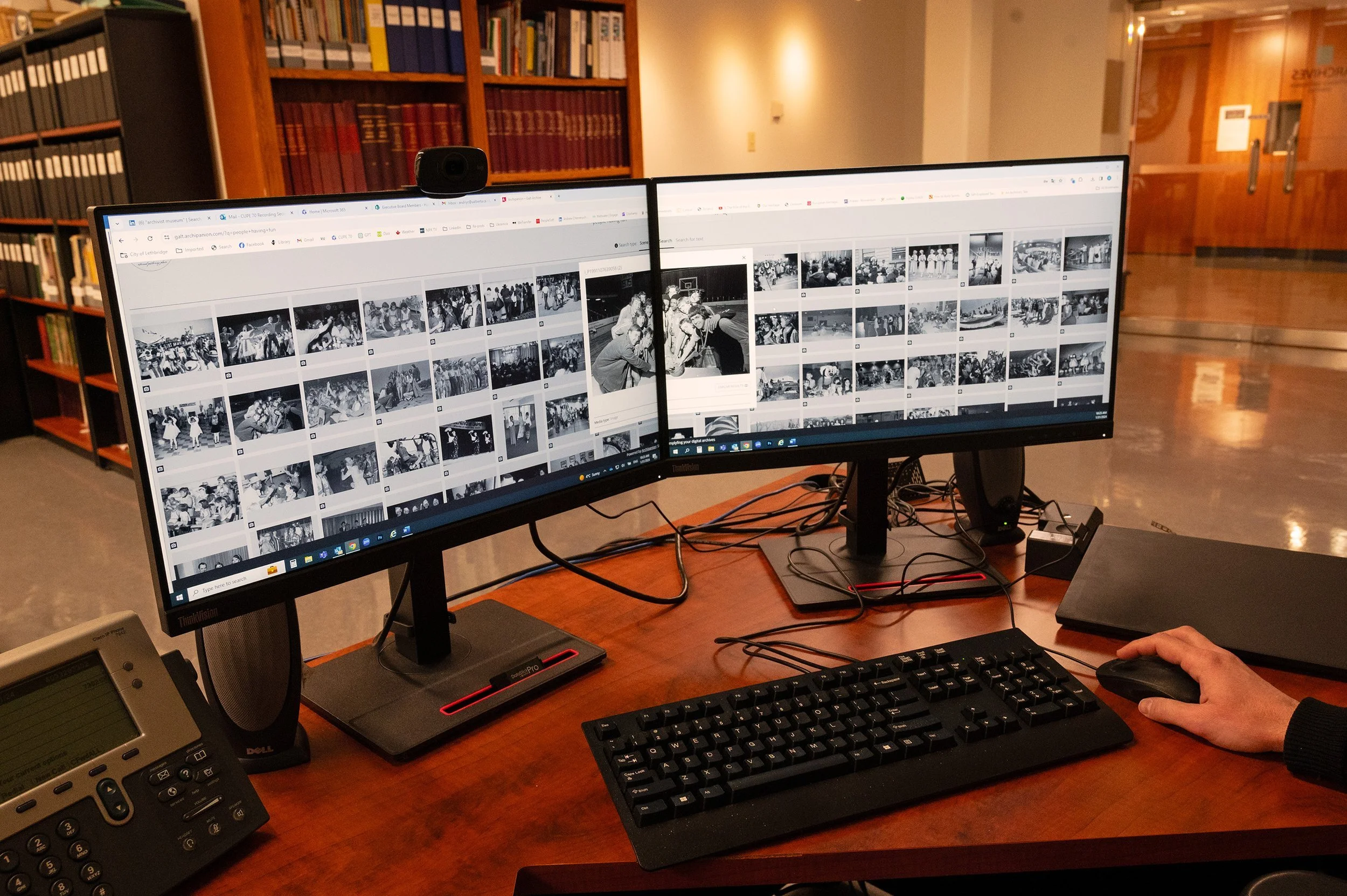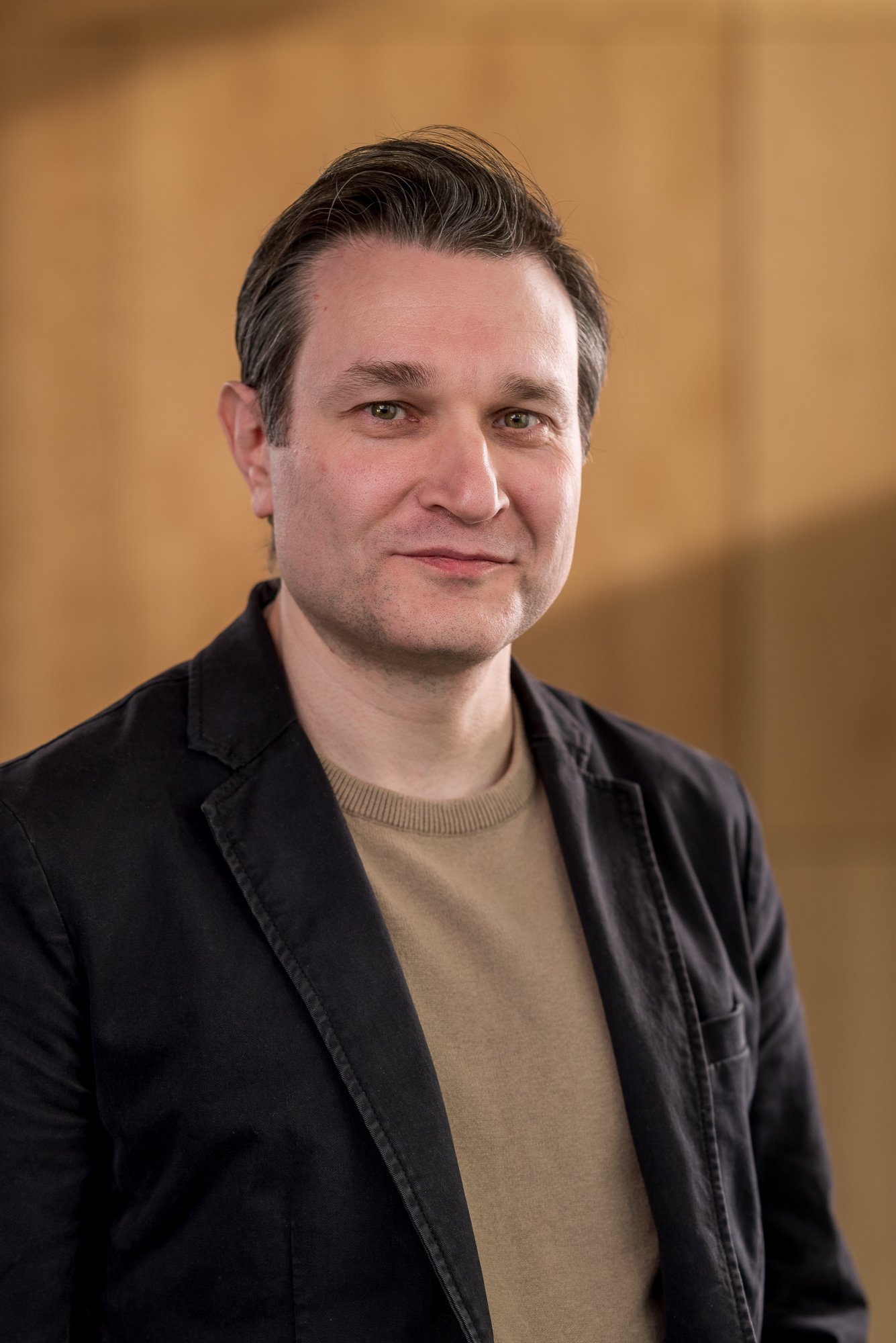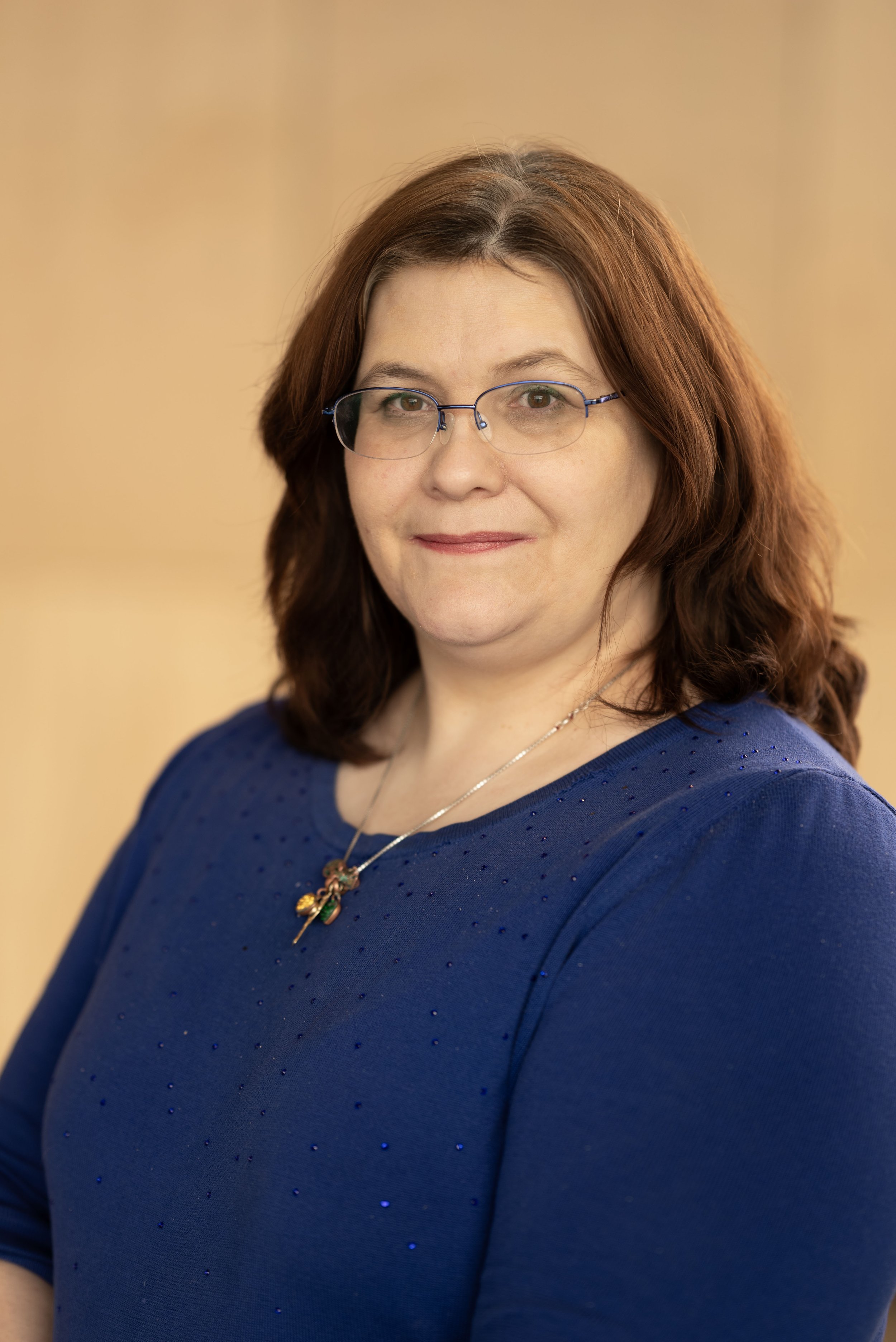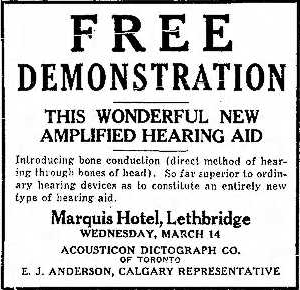Book your research visit to the Archives
Staff
The Galt Museum & Archives have an extensive collection of hundreds of thousands of archival materials and collections items. Our collections are open to residents and researchers. You can search our collections database at https://collections.galtmuseum.com.
Our previous database offered researchers separate search sites for archives, collections and our library. Our new database has combined them all into one database and search function.
The process of capturing and preserving our history is never complete, nor is the history itself written in stone. We are always grateful to you for pointing out any errors you may notice. Too often the years go by and the opportunity to make corrections slips away.
Order Archival Documents
Archives
The Galt Museum & Archives collects and preserves information of permanent value to the study of the human history of Lethbridge and southwestern Alberta. We collect archival resources, like photographs, minutes, oral histories, and other documents, from both public and private sources and it is available to all researchers.
Collections
The mandate of the Galt’s collections is to actively collect human-made artifacts and intellectual property that illuminate the founding and development of Lethbridge and southwestern Alberta from the late nineteenth century to the present. In addition, we acquire materials that highlight the region’s Indigenous history, focusing on the culture of the Blackfoot Confederacy. All objects will be used for the exclusive purposes of preservation, research and presentation to the public.
Donations
The Galt Museum & Archives actively collects and solicits new artifacts on a year round basis. The Galt, however, will not accept a donation if conditions are attached to the offer.
Donations are reviewed by community-based Acquisitions Committee four times a year to determine the artifacts’ suitability relative to the mandate of the Galt Museum & Archives.
The committee also reviews the condition of the item and examines the existing collection to see if there are examples of similar items which already have been collected. If the item meets the Museum's criteria, the item is accepted into the collection.
This review process commonly takes from four to six months. If an artifact(s) is wanted for the Museum’s collection the donor will be informed and requested to sign a Certificate of Gift.
Endorsement of the Certificate transfers legal ownership of the artifact(s) to the Museum and to the City of Lethbridge.
Loans
The Galt Museum & Archives makes available for loan artifacts from its permanent collection and from its hands-on teaching collection on a temporary, conditional basis.
The Galt reserves the right to refuse loan requests for reasons including conservation and applicant unsuitability.
Candidates must adhere to all loan contract conditions. These conditions include, but are not limited to, maintenance of a proper display/ storage environment, adherence to all security requests and proof of insurance should the artifact become lost, stolen or damaged.
Conditions relative to the loan of artifacts are more stringent than those which apply to objects of the teaching collection.
Attribution
Please label your photo or other archival information obtained from the Galt with "Courtesy the Galt Museum & Archives | Akaisamitohkanao’pa" and include the UID number. Browsing through our database is free, but permission to use items from the database usually comes with an associated cost. Review our fee schedule if you have specific requests.
Battle of the Belly River Project Seeks to Amplify Niitsitapi Voices
The Battle of the Belly River is a significant event that happened between the Blackfoot People and a group of Crees in 1870. The Galt Museum & Archives | Akaisamitohkanao’pa, in partnership with Lethbridge College, Reconciliation Lethbridge and the City of Lethbridge Indigenous Relations Office, are embarking on a project that will focus on and highlight Niitsitapi knowledge and perspectives of the event.
Although there have been three publications on the events of this day (1966, 1997, and 2020), all of these publications are a telling of the story from a settler/colonial perspective.
“It’s important to centre Blackfoot Peoples’ experiences in the retelling of historical events,” says Camina Weasel Moccasin, Indigenous Curator for the Galt Museum & Archives | Akaisamitohkanao’pa. “We are looking to engage in a more meaningful way with the Niitsitapi community to develop a new project that better explains this significant event.”
In order to focus on the Niitsitapi voices that have been ignored in the past, the Galt will engage with Elders and Knowledge Keepers from the Blackfoot communities about this specific event. In addition to this, the Galt is encouraging community members and families to share any stories that have been passed down. Some families may even have items/artifacts from the event that they have been safe keeping for the family. The Galt Museum is very interested in photographing these items and hearing the story that is associated with them.
“We believe this project will continue efforts toward reconciliation and relationship building by informing residents of the impact the battle had on the development of Lethbridge,” explains Darrin Martens, CEO for the Galt Museum. “Being able to work with our partners at Lethbridge College, Reconciliation Lethbridge and the City of Lethbridge Indigenous Relations Office is helping to strengthen those community connection as we work towards reconciliation.”
History and knowledge of the battle continue to live on in the communities of the Blackfoot People. Many families have stories of their ancestors’ exploits and some families may even have artifacts that were used during the battle that day. The museum emphasizes that anything shared will remain the physical and intellectual property of the families and the Niitsitapi communities.
The Galt Museum would be honoured to recognize the family history related to the Battle of the Belly River. Anyone interested in contributing to the project can contact Camina Weasel Moccasin (Ikinainiahkii, Gently Singing), Indigenous Curator at the Galt Museum via email at camina.weaselmoccasin@galtmuseum.com or by phone at 403.320.3838.
Anyone interested in contributing to the project can contact Camina Weasel Moccasin (Ikinainiahkii, Gently Singing), Indigenous Curator at the Galt Museum via email at camina.weaselmoccasin@galtmuseum.com or by phone at 403.320.3838.
